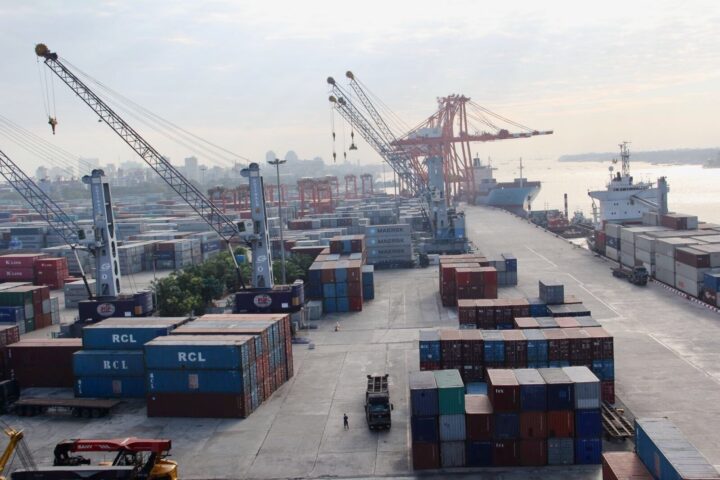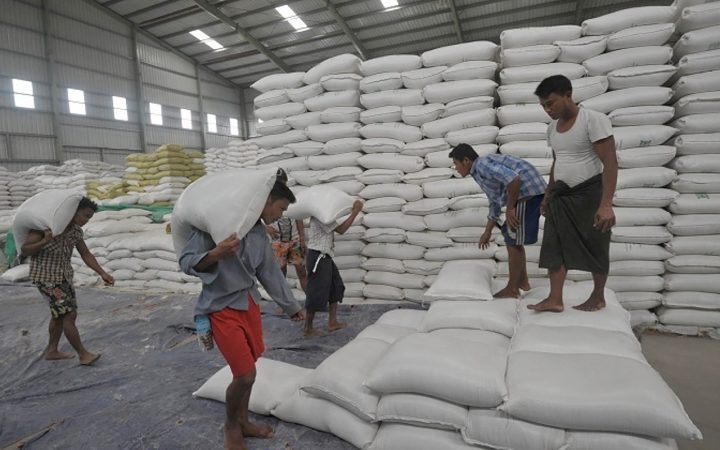Lack of safety measures in Myanmar's booming shopping centres poses a threat to mall-goers, shopkeepers and investors (experts)
20 กุมภาพันธ์ 2560
Despite Myanmar’s softer-than-expected growth, there are still fairly visible developments compared to the years before 2010. A rise in the number of shopping malls is a striking testimony to the recent economic changes of Yangon. This trend has intensified since 2012, when plush shopping malls started reaching beyond downtown into other areas of the city. The emergence of modern plazas, accommodating foreigners and the rising middle-class, is welcome and impressive.
However, the lack of measures in shopping malls, regarding fires and other accidents, is a cause of concern for both investors and visitors. According to experts, effective preparatory measures should be in place in case a fire breaks out, especially since shopping malls are at times cramped with families, tourists and local residents. Effective solutions are important not only for saving lives, but are also vital in minimising the damage done to shops and goods, therefore reducing the risk for owners and investors.
On January 27, the Junction City Tower development site caught fire. The site was in construction for a multi-purpose complex comprising a five-storey shopping centre, office buildings and a hotel, on Bogyoke Aung San Road.
A calamitous fire engulfed more than 1600 shops in Mingalar Market on January 9, 2016. The estimated financial damage exceeded K360,000 lakhs.
Moreover, fire broke out on the 22nd floor of the 34-storey Diamond Inya building on November 17, 2015 after a searchlight fell and ignited plywood and timber. Five days later, yet another blaze engulfed the YKKO Kyay-Oh shop located on the top floor of the Junction Centre between Kyun Taw Road and Pyay Road.
While there are not known casualties in these accidents, anxieties run deep among investors, shop managers and consumers. Those thinking of launching their businesses at the malls are having second thoughts, and rightly so.
As high-voltage cables are used to power air-conditioners, lifts, escalators and other electric equipment, fire safety is a crucial concern when constructing a shopping complex, said U Myat Min Thant, safety officer who is responsible for safety in the government buildings.
“Fire is the most important in [terms of] safety measures for the construction of shopping centres. Because air conditioners there are not the same as those used in a normal [residential] building. They use air conditioners of heavy duty volts [VAC]. Moreover, high voltage cables have to be used for lifts and escalators in shopping centres. Those high-voltage cables can be short-circuited and it can lead to a fire,” he explained.
The system of electric components and equipments in a plaza should be carefully and systematically installed only after consultation with electrical engineers, he added, and that only high-quality high-voltage cables should be used.
“I would suggest hiring qualified electrical engineers for electrical maintenance,” he said.
According to U Yan Aung, general manager of Asia Construction, the walls of a building such as a shopping mall should be made of glass. Since there are a lot of people inside the vicinity, glass would enable to people to evacuate more easily.
“As shopping centres are usually crowded, all the people cannot run out of a single exit simultaneously. If the building is built of bricks, all the people cannot escape. If it is made of glass, people can break the glass and run away in case of an emergency,” he continued.
U Myat Min Thant added that the number of entrance and exit gates should be proportionate to the size and expected number of visitors. These should be taken into consideration when designing the construction plan of a shopping complex.
“It is pivotal in the architectural stage to draw up entrance and exit doors according to the capacity of the structure,” he explained.
The design should establish the flow of visitors every day. There should be a plan to deal with emergency so people can exit smoothly and systematically. There should also be signboards in English and in the Myanmar language.
“Signboards directing people to the exits should be displayed. The signs should be written not only in English, but also in Myanmar. Only then will the people realise where to evacuate during an emergency.”
Areas with cinemas should be even more cautious in this regard.
“If the shoppers rushed out en masse, there could be problems at the exits, and they will be in a crisis,” the officer warned.
U Yan Aung added that these shopping complexes should have a sufficient fire extinguishing system installed for safety precautions. A good system would allow a fire to be put off efficiently.
“A second fire ignited at Yangon Mingalar Market because of the absence of a fire fighting system.”
The safety officer pointed out that the new malls include a lot of restaurants and food courts. These stores are more prone to fire accidents than other shops, so a fire-extinguishing system and more exits should be put in place more urgently.
“For new centres, there should be at least two emergency exits on each floor, depending on the size of the building. Signboards with lighting must be used so that they can be easily seen in the dark,” he continued, “There should be more exits on the floors with restaurants. And, these exits should not be treated as an ornament; they must be cleared, so that they can be used smoothly at any time.”
Furthermore, U Yan Aung said the security personnel in the area are uninformed of the fire system and emergency situation.
“Security guards in shopping centres are weak in their knowledge of fire safety. They don’t know how to respond when it comes to hazards ... They need to be better trained and educated to clearly direct people to the exits and know where the extinguishers are,” he said.
U Myat Min Thant said education on fire safety should be conducted for mall-goers.
“Shopping malls should hire safety officers as part of their permanent staff. If an emergency happens, these safety officers will fulfil their duties, and guide people toward emergency exits ... Our country is not well-equipped with safety information, such as the fact that we should not use the lifts when a fire breaks out. We should put on signs saying so,” he said.
Daw Kaythi May, owner of a female fashion shop at Taw Win Centre said that sufficient fire extinguishers should be provided in easily accessible locations, and exit signs should be conveniently spotted.
“I have never been seen sufficient fire extinguishers being put in good locations in most shopping centres. Most of them are still weak in providing clear directions to emergency exits,” she said. With measures in place, the financial damage to shop owners can be minimised in case of an
accident.
The Myanmar Times contacted shopping-mall developers about their preventive measures in some of the most popular plazas in Yangon, but they did not reply despite repeated requests for comment.
An official from Western District Fire Department, on the condition of anonymity, told The Myanmar Times that the fire department conducts regular checks on preventive schemes against fire once every six months at shopping centres under the authority of the Yangon City Development Committee area.
“We make regular checks in shopping malls either once in six months or once a year. We conduct checks on fire prevention,” he said.
Reference : (The Myanmar Times: http://www.mmtimes.com/index.p

















